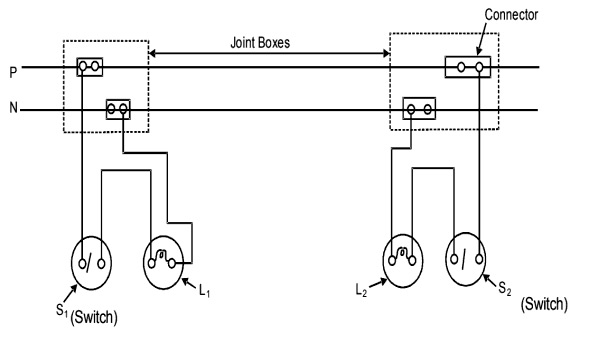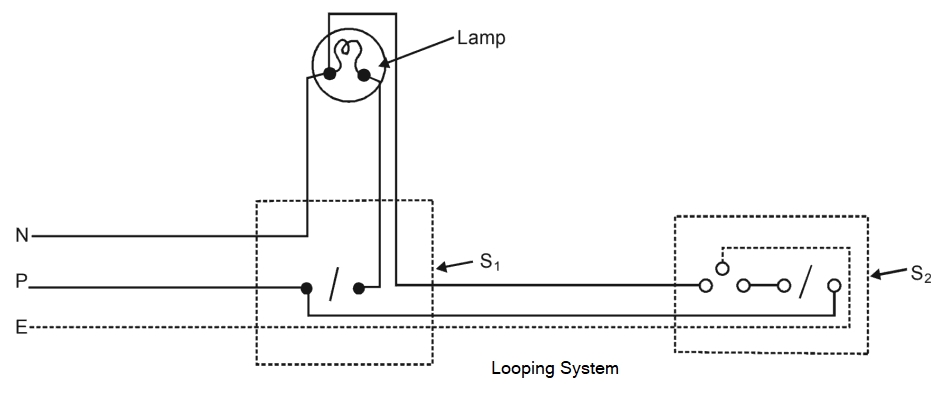Which among these is a method of wiring? Joint box Tee system Loop in system
- Joint box
- Tee system
- Loop in system
Right Answer is:
i, ii, & iii
SOLUTION
Method of connecting Electrical equipment to supply
Electrical equipment can be connected by following two methods-
- Tee or Joint Box method
- Looping method
i) Tee or Joint Box method- In this method joints lamps, fans, etc. are connected in the joint box, cutout, three plate ceiling rose, connecter, etc. In this method first of all phase wire is connected and joined with the switch and then upto the lamp from the switch, whereas neutral is directly joined with the lamp, as shown in the figure. More wires need more joint boxes. This may also cause more faults. Therefore the method is used for Temporary wiring.

The advantage of this system is cables can be laid and connected during the first fix stage of the installation. This method is quicker and easier to connect accessories, as there are only one or two cables present the majority are within the joint box at an earlier stage of the installation.
The disadvantages will show up after the installation is finished. It can be difficult to trace faults or carry out cable tests when, for example, a chipboard floor has been laid. Another weakness is the practical ease of access to all the joint boxes. Ideally, marked traps cut and fitted directly over the joint box during the construction stage would provide a way out of this problem.
ii) Looping Method – In this method no joint box or ceiling rose is used. All the joints are completed on a switch or holder. One phase wire is brought to the second switch which makes a loop. This is shown in fig. Nowadays this method is mostly used. This neutral wire goes from one lamp to another.

Advantages of looping system
i) Number of joint boxes or ceiling roses is needed.
ii) Faults can early be heated.
iii) No tapping is required as there is no joint.
Disadvantages
i) More wire is needed in this system.
ii) More copper loss.
iii) More expenditure is needed.
